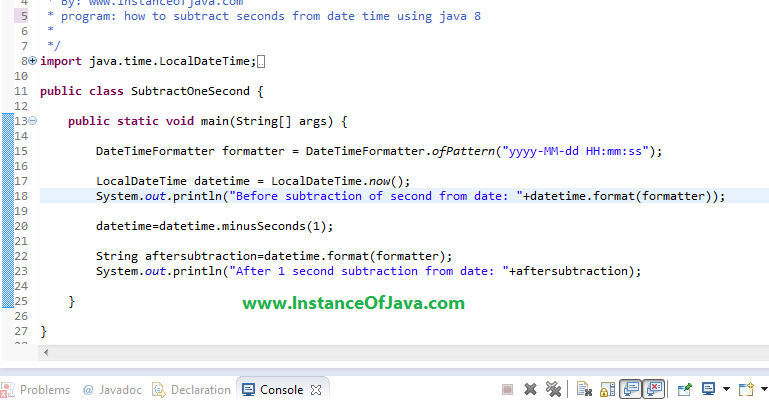

DAY_HOUR where value is of the format – ‘DAYS HOURS’. DAY_MINUTE where value is of the format – ‘DAYS HOURS:MINUTES’. DAY_SECOND where value is of the format – ‘DAYS HOURS:MINUTES:SECONDS’. DAY_MICROSECOND where value is of the format – ‘DAYS HOURS:MINUTES:SECONDS.MICROSECONDS’. HOUR_MINUTE where value is of the format – ‘HOURS:MINUTES’. HOUR_SECOND where value is of the format – ‘HOURS:MINUTES:SECONDS’. HOUR_MICROSECOND where value is of the format – ‘HOURS:MINUTES:SECONDS.MICROSECONDS’. MINUTE_SECOND where value is of the format – ‘MINUTES:SECONDS’. MINUTE_MICROSECOND where value is of the format – ‘MINUTES:SECONDS.MICROSECONDS’. SECOND_MICROSECOND where value is of the format – ‘SECONDS.MICROSECONDS’. The below ‘interval_type’ values should be in quotes. The ‘interval_type’ parameter can have the below values – ‘interval_type’ is the type of interval to be added. ‘value’ is the value of the time interval to be added and,. ‘days’ is the number of days to be added to ‘date’,. ‘date’ is the date/datetime value to be modified,. In fact, you can go ahead and make a reusable function, as shown in the following snippet. And the end result is the newDateObj object, which should show a date ahead by one hour compared to the currentDateObj object. Thus, we’ve added numberOfMlSeconds and addMlSeconds to get the total number of milliseconds, and we’ve used it to initialize a new date object. Basically, we’ve just multiplied the number of minutes in an hour (60) by the number of seconds in a minute (60) by the number of milliseconds in a second (1000) to get the number of milliseconds in an hour.Īs you might already know, you can initialize a Date object by providing the number of milliseconds as the first argument, and this would initialize a date object in reference to it. Next, we’ve calculated the number of milliseconds in an hour. Next, we’ve used the getTime() function to get the number of milliseconds from the currentDateObj object. NewDateObj: Sat 01:19:27 GMT-0300 (Atlantic Daylight Time)įirstly, we’ve initialized the currentDateObj variable with the current date, and it’s a Date object. Var newDateObj = new Date(numberOfMlSeconds + addMlSeconds) Var numberOfMlSeconds = currentDateObj.getTime() In the following example, we’ll add one hour to the existing Date object. Let’s try to understand how you can use the getTime() function to add time to a Date object in JavaScript. That's just a computer time convention that counts the number of seconds (milliseconds in JavaScript) since midnight UTC on January 1st, 1970. In JavaScript, the getTime() function returns the number of milliseconds since the Unix epoch time. In this section, we’ll discuss how you can add time to a JavaScript Date object in vanilla JavaScript. #Datetime minus minutes how to
How to Add Time to a JavaScript Date With Vanilla JavaScript Today, we’re going to discuss both ways of performing date manipulations in JavaScript. Alternately, you can use a date and time library like moment.js. Often, you'll just end up implementing a custom solution which works for you.

In fact, if you want to perform operations on a Date object like adding time to or subtracting time from a date, there’s no easy way in vanilla JavaScript. In most cases, you can just use these methods to format the date and time for output. Although these methods are really useful for retrieving different elements of the date and time, a Date object doesn’t provide any methods that you can use to manipulate the date itself. Luckily, JavaScript provides a built-in Date object which provides a lot of utility methods for date and time management. Often, you'll need to work with dates and times in JavaScript. Specifically, we’ll see how you can add time to a Date object and subtract time from a Date object in JavaScript. In this article, we’ll discuss how you can do date manipulations with a JavaScript Date object.






 0 kommentar(er)
0 kommentar(er)
